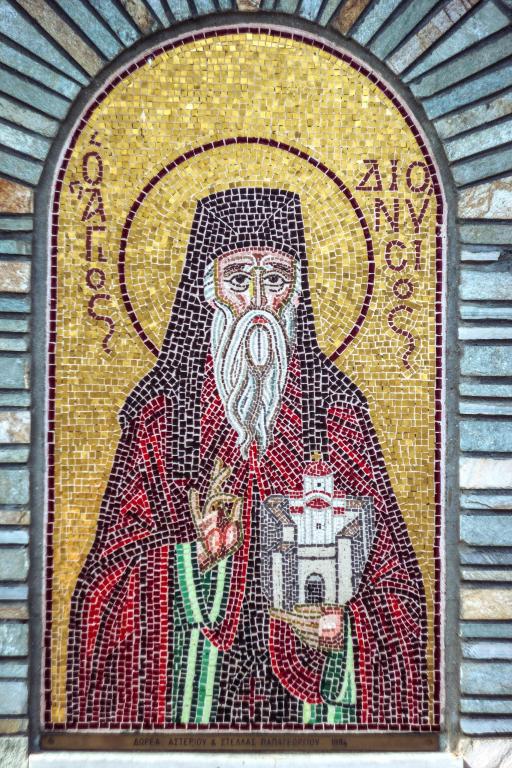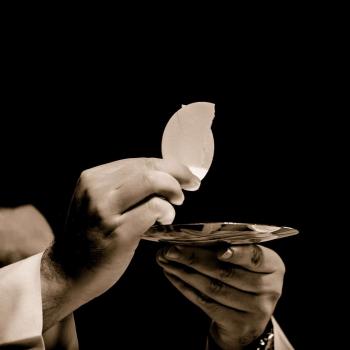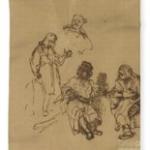Delivered eight years ago, this month, the observations outlined below are the remarks that I made when installed as the Rueben P. Job Chair in Spiritual Formation at Garrett-Evangelical Theological Seminary in Evanston, IL. Over the years I am convinced that the challenge outlined here has become more, not less important to the well-being of both theological education and the church.
The longer I live, the more keenly aware I am of our collective dependence upon the wisdom, vision, and generosity of others. My personal list would leave us sitting here for days on end. So I will I will confine my own list to my wife, Natalie, a priest of the church and a scholar in her own right. I would not be here today without her wisdom, love, and good counsel.
But institutions, too, live in dependence upon each generation and it seems appropriate to mention, in particular, Bishop Rueben Job whose name graces this chair. Bishop Job’s ministry in South Dakota and elsewhere forged a space for the work of spiritual formation in the life of the United Methodist Church that is consonant with the church’s best traditions and long history. For over sixty years now, Bishop Job and his wife, Beverley, have devoted their lives to this work and this community is forever indebted to their vision, generosity, and devotion.
Even that kind of sustained, deep devotion is nurtured by a wider circle of faithful friends, and we are also dependent upon and grateful for the generosity of Rod and Doris Gist, Jim and Jean Beddow, Bill and Becky Lawson, Jerre and Mary Joy Stead, Bob Burkhart, and countless others.
For the same reason, a special word of thanks is due to Jay and Billie Wilbur of Panola, Texas, whose extraordinary gift last year finally made this chair possible. There is something that is simply “right” about a vision begins in South Dakota and finds that kind of “yes” in Texas.
Finally, we need to acknowledge the passion, vision, and hard work of our colleague, Dwight Judy and his wife, Ruth. Thanks to Dwight’s tireless efforts, Garrett’s devotion to the spiritual formation of students from around the world has taken deep root in the life of this institution and the United Methodist Church. Dwight, dear friend, we thank you.
Would you pray with me?
Almighty God, whose loving hand has given us all that we possess: Grant us grace that we may honor you with our substance and live in gratitude all the days of our lives, through Jesus Christ our Lord. Amen.
According to the fathers of the church or, more accurately, my artist-friend, Jack McCarthy, “There once was an old monk who was chosen by…God to be an example for the younger monks to follow. And so he was. When he bowed he bowed so low he could touch the floor. When he prayed he would pray so loud the other monasteries could hear him. When he fasted he would only eat every third year. When he was given penance he would always multiply it by five hundred. After many years the old monk died. The abbot and monks were lost without his guidance. As they laid him to rest they asked God who would lead them in the future? And God replied, “Get someone who has ALL of his marbles!” Jack adds: “Thus it was written. Thus it was said…really.”[i]
Like most stories of this genre, the tale has multiple points of application. It is, in part, a cautionary tale about conspicuous piety, but the story also skewers mindless spirituality. As such, it is an appropriate story for a theological community.
So, let us imagine for a few moments that we followed the grieving community in its quest to find a monk with all of his marbles. After all, that quest would also tell us something about the kind of monkish students we might hope and plan to prepare and nurture, whether they work in a monastery or not.
The old monk’s community, of course, lacked the benefit of job descriptions, the posting of openings, the benefit of written questionnaires, the convenience of Skype interviews, and, finally, the expensive face-to-face conversations. So, instead, they dispatched three members of their community to find a successor. Making their way across the Egyptian desert, they scattered, treading hot sand and giving countless scorpions a wide birth.
Eventually, the first monk returned, announcing that he had found an open, accepting candidate, a monk without concrete convictions, a monk who would offend no one’s sensibilities.
Some in the community warmed to this first candidate. He possessed a malleable spirituality, without defining characteristics. He resisted naming God. He emphasized practice over theology and he sagely observed that none of the creeds on which the church relied really mattered in the final analysis. This gave everyone a bit of wiggle room and, being an apophatic community, they embraced silence and the via negativa. With this monk as spiritual guide there would be no need to argue theological, much less doctrinal positions.
“This is where we all finally find ourselves,” they argued, “without names and without images. We know that in the end all language fails to describe God. Why not name a new spiritual father who has grasped that wisdom at the outset?”
They pondered the argument for a time and then, slowly, an aging monk rose to speak. “I had a great love once, who died long before I joined the community. If you had asked me, ‘Did you know your love?’ in my youthful presumption, I would have responded, ‘Of course.’”
“But it is hubris to argue that we truly know those we love and greater hubris yet to argue that we know the Almighty One. Still,” the old monk continued, “to have argued I knew nothing about my beloved and yet loved her would have been nonsense. We journey into intimacy with God. Words and categories serve us along the way. When those words and categories fail us, it is not the knowledge of God that proves fragile, but our understanding. And we are then forced to add humility to our quest, reminded that the finite cannot capture or control the infinite.”
With that the community fell silent and decided to wait for the return of the second monk. Days passed and, finally, the second emissary returned. Jubilant, he announced, “I have found the perfect candidate. He has lived in utter and complete isolation. All the wisdom that he has gathered is the product of his time alone. He is free of the trappings of religion. He has lived in such complete isolation that the hypocrisy so characteristic of the religious has never taken root in his life. He will prove to be a great spiritual mentor.”
The introverts warmed to the announcement. What better example of their monastic community and what better assurance that they would be left in peace? Silence fell and remained — almost as if the monks were testing the proposition that the best of spiritual leaders was a solitary soul with no religious commitments, theological background, or sense of community.
But after a time, the old monk who had risen in protest to the first candidate struggled to his feet again. “My brothers,” he cried, “What drives you to seek companionship at all, if not for the sake of community? Are we not saved in order that we might become a part of the body of Christ? Is not the nature of the salvation we are offered social as well as individual? And is not the sin of hypocrisy a universal malady, born of the struggle to live faithfully and transparently in a world that tries, surprises, and subverts us all? Spare a thought for those who are sincerely religious and surrender the gifts of life lived in splendid isolation to live as members of Christ’s community. However flawed, they know one cannot be a Christian in isolation.”
Deep silence fell again upon the assembled monks until, at length the third of their emissaries returned. “My brothers,” the exhausted monk shouted, “I have found the one whose life draws our quest to a close. The candidate I have found refuses to be seduced by the charms of the spiritual life and he spends his time among the poor. He knows that what matters is love, that those who are preoccupied with prayer are simply evading the demands of the Gospel.”
As before, there were those who believed that at long last, their quest was finished. There were activists among them who had struggled with the community’s quietism and they felt the fresh inspiration of mission and identification with the poor.
And, yes, the old monk rose a third time. “My brothers, long before most of you joined the community, I chafed under the demands of constant prayer. My conscience struggled with the demands of the spiritual life and I surrendered my habit for rags, living in solidarity with the poor. Until — at long last — I realized that my deep attachment to the poor served my own needs and not theirs. God, calls us to journey outward, but that journey, no less than the journey inward can be wreathed round with pride, if we are not armed against its seduction by awe-filled silence before the Lord our maker.”
At that one of their number arose. “Enough! We have sought far and wide for a monk with all his marbles and it appears he lives among us. Receive the mantle of leadership and be to us a source of thoughtful devotion!”
The old man rose and shook his head. “I am not the one that you seek. The wisdom that you desire is found in listening to all of God’s beloved children. It is Sister Agnes, who knows her God, who risks community with those who refuse her admission and yet serves our meals and prays with us. She is the one with all her marbles and her presence among us challenges us, confronting us with the other, destroying the hubris that assumes God can be remade in our image alone. She is a woman. She is holy. She should be our spiritual leader.”
One wishes there was a happy ending to this story. But we all know how fragile our commitments to God can be, when faced with a challenge to that which we really hold dear. So, the monks began to argue with one another and called for a wider search.
My friends and new colleagues in the academy, we have often pitted the development of the mind against the development of the soul, the journey inward against the journey outward, the spiritual deepening of the individual against the life of the community, piety against works, practice against theology, and the Protestant passion for Scripture against the Catholic emphasis on liturgy and spiritual practice.
In fact, it may be our “this-not-that approach” to the Christian life that has slowed the progress of spiritual formation in so many Protestant seminaries — leaving space for leaders like Bishop Rueben Job to lead the way — at what seems a strangely late place in American church history to finally discover the importance of spiritual formation. The late, great Lady Margaret Professor of New Testament Interpretation, C.F.D. Moule, used to say, “Theologians can only entertain one great idea at a time.”[ii] We have been looking elsewhere, and, sadly, our vision for the Body of Christ has often been more myopic than holistic.
If, however, we have any hope of connecting with a growing number of Americans who consider themselves as spiritual, but not religious, we will need to demonstrate the deep connections between what we do as a church and what it means to be spiritual. That, it seems to me, relies on integrating, rather than dissecting the Christian tradition.
If I were going to describe where I hope we will be ten years from now, allow me to suggest — even in these early days — that we could do worse than to offer a theological education that pulls back from the false choices that have so often characterized academic conversations.
First, let’s work to restore the balance between the pursuits of the mind and the growth of the spirit. This is hardly a new agenda item. It was Charles Wesley, in the hymn that he composed for the opening of Kingswood’s School in 1748, and — most scholars believe, by conviction, John — who invited the educators of Kingswood to “unite the two so long disjoined, knowledge and vital piety.”
A second effort that we might make is to restore the balance between the journey inward and the journey outward. Without the first, we are irresistibly thrown back on our own resources and our own power, rather than the power of God. Without journeying outward, we run the risk of quietism and theological navel-gazing. The journey inward and the journey outward are both legitimate dimensions of the Gospel life. Jesus cared tirelessly for the poor and wounded. He also left them waiting for his attention, in order to pray. Both dimensions of his life and ministry remind us of our utter dependence upon God and the demands that those movements make upon our lives.
Finally, let us abandon any embarrassment we may have at being both spiritual and religious — or even theological! The redemptive message that we explore together in chapel and in the classroom is not just personal, but communal and we should be candid about it. It is here that we contend for a vision of the spiritual life that is at odds with our culture and cannot be reconciled with its individualistic and privatized demands. It is here that we learn to see the world through the reality that is our shared life as sisters and brothers, co-heirs with Christ.
Our commitment to formation in community is rooted in our understanding of the body of Christ, and in the inescapable and indispensible conviction that we were baptized into a community that nourishes us through its sacraments. We were saved for this: saved to be made a part of the body of Christ, saved to live in dependence upon one another and upon our Savior, saved to reach out to others in the name of the One who bears the perfect image of God.
Our failure to unpack the implications of ecclesiology, liturgy, and their deep connections to our spiritual lives has reduced our conversations about spirituality to practice and left us out of touch with the theological necessity of life in community. Our life together in Christ and our worship of God and encounter with the Divine in the sacraments are, acknowledged or not, the foundations of our spirituality. And our neglect of this “fact of life” has left us without strong apologetic and evangelistic voices as a church.
As I have already told the entering students this year, the greatest obstacle to the church’s message and its spiritual strength is not secularism. It is our failure to believe deeply enough in the sacramental reality into which we are baptized and which constitutes the church. We should embrace that reality. Christian spirituality is intrinsically social. We cannot be spiritual alone. The shape of salvation is not purely individual. It is communal, and what the world takes for religious expression, on the one hand, and spirituality, on the other, cannot be teased apart, if they are both what they should be.
The challenge that I have outlined is urgent in a way that was easily ignored fifty years ago. Cossetted by social respectability and comforted by the high tide denominationalism of the fifties and sixties, we took the core of the Gospel for granted and assumed casual exploration of our spiritual lives would be adequate.
So, when the world changed — and it has — those who were seekers went elsewhere. More and more people are telling researchers — from Lily, Pew, and Barna — that those seekers no longer have time for a church that does not help them to find God.[iii]
Our past ascendancy has cost us our marbles. It’s time to get them back.
[i]Jack McCarthy, “Holier than Thou.” Jack’s work can be found at: http://www.jackmccarthyprints.com/
[ii] From a conversation with C.F.D. Moule sometime in the 1970s.
[iii] Those studies are too many and are constantly being up-dated to cite here, but are available on-line and widely acknowledged as accurate.













